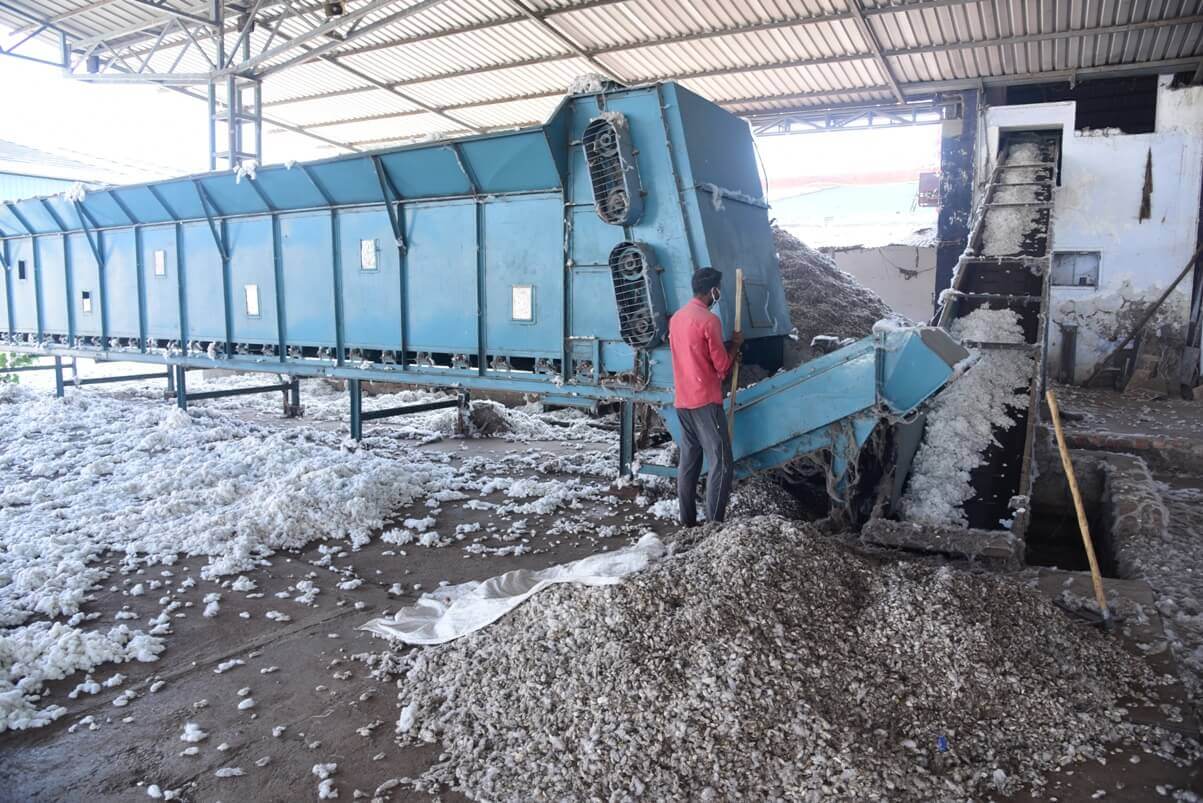Our Cotton Ginning Process
In our automatic ginning process of cotton, a modern machine is preferable. Before cotton arrives at the spinning mill to spin into thread and woven into the fabric, it makes the journey from field to bale. Cotton needs about five months to grow from a planted seed to a ready plant.

- The harvesting machine named cotton picker plucks fluffy seed cotton out of the planta€?s boll and leaves a trail of burrs and sticks behind.
- The machine empties the pulled cotton into a tractor-drawn buggy.
- The machine builds the seed cotton into a humongous rectangular block called a module.
A truck transports the module to the processing plant, which is known as a cotton gin. Once the cotton arrives at the processing plant, sticks and burrs are removed as well as any lingering debris and seeds. A truck dumps the module into a feeder, which moves the packed seed cotton into a dispenser.
The ground seed cotton falls onto a conveyor belt, which leads to the hot box, then the hotbox mixes the seed cotton with hot air, which allows the moisture to evaporate, making the seed cotton easier to clean.
